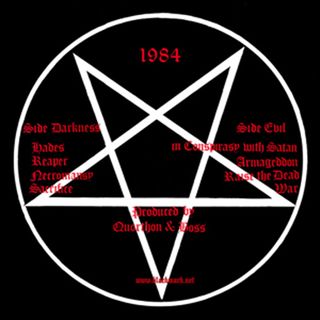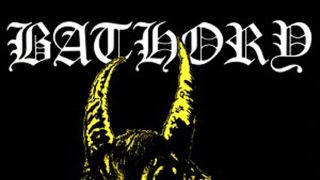Bathory made their recording debut in March 1983, when the songs Sacrifice and Return Of The Darkness And Evil were last minute additions to the compilation Scandinavian Metal Attack. The enormous response to the band took everyone by surprise.
When Tyfon, the label that released Scandinavian Metal Attack, asked the band to do a full album, there was an immediate problem: Bathory didn’t exist anymore. Two members had relocated to London, leaving guitarist/vocalist Quorthon on his own.
To resolve the issue, Quorthon decided to bring in bassist Rickard ‘Ribban’ Bergman and drummer Johan ‘Jolle’ Elven. He’d work with them before on demos for the songs Die In Fire and You Don’t Move Me (I Don’t Give A Fuck). However, Elven rejected the approach, preferring to join the Swedish navy!

So, Quorthon turned to Stefan Larsson to play drums, and on May 22, 1984, the new Bathory line-up rehearsed for the first time at a studio run by the Stockholm City Council Department Of Culture And Leisure. It was their only chance to rehearse any of the material before recording the album.
On June 14, 1984, Bathory started recording their debut album at Heavenshore, a converted garage in the Stockholm suburb of Huddinge. The garage had been turned into a primitive studio.
Due to a chronic shortage of money, the band were forced to record the entire album on a single two inch tape running at half speed. It meant there was a lot of extraneous noise throughout the recording, and this was audible on the final album.
The intro to the album, titled Storm Of Damnation, was z tribute to the opening of the debut Black Sabbath album, the track Black Sabbath itself. The bell you hear is Big Ben slowed down.
Storm Of Damnation wasn’t listed on the final track listing for the original album pressing, because the band forgot it!
In all, Bathory spent just 56 hours recording the album.
Although the sleeve says the album was mixed at Elektra Studios, it was actually mixed at Heavenshore.
The goat on the cover was created by the band. They put it together as a collage, using images cut out from horror comics.
The goat was supposed to be printed in gold, as this was a magic colour. But it proved to be too expensive, so Quorthon asked the printer to come up with something within their budget that was as close to gold as possible. However, Quorthon hated the yellow chosen. But he couldn’t do anything about changing it. `it was changed after the first pressing of 1000 sold out.

The song Necromancer was misspelt on the cover as Necromanser for a practical reason. Quorthon used sheets of Letraset, which allowed you to transfer letters individually onto paper or cardboard, to make up the song titles for the back of the album. But he’d run out of ‘c’s by the time he got round to Necromancer. Hence the different spelling.
Because Tyfon weren’t a label known for releasing metal, Quorthon designed a special label, to make Bathory stand apart. And this was the first time Black Mark was mentioned. Although it was only an imaginary label at the time. His initial idea was to create a label called His Master’s Noiae, but he was persuaded to alter this, because of the German label Noise Records.
The original title of the album was to be Pentagrammaton. But this was changed, because several people misread it as Pentagon.
Read this interview with Quorthon from 1987


